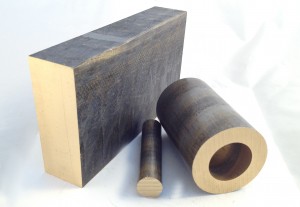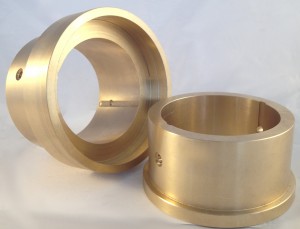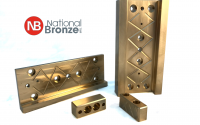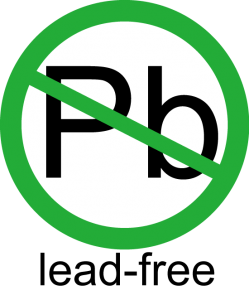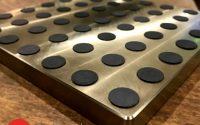Why Don’t You Stock C93700 SAE 64 Bearing Bronze?
This is a common question we receive at our office. To answer this we first have to understand the history of this alloy and the alternatives available today.
C93700 SAE 64 is a Leaded Tin Bronze. It is sometimes referred to as 80-10-10 Bronze. This references the chemical composition of 80 % Copper, 10 % Tin, and 10% Lead. C937 utilizes the Tin to add strength to the alloy. The addition of lead acts as a natural lubricant and increases the machinability of bronze alloys. Lead also allows dirt particles to become embedded in the bearing surface, thereby protecting the journal.
For years the 80-10-10 bronze was the premier bearing alloy, combining the ideal combination of strength, bearing properties, and ease of machinability. It has been said that this was the case all the way up until World War II. At this time the countries supply of Tin and Lead became scare due to the consumption in various war time products. Engineers and Metallurgist needed to come up with an alternative alloy in order to continue producing much need bronze bearings. This need for innovation brought us Copper Alloy C93200 SAE 660 Bearing Bronze. C93200 utilizes a combination of Tin and Zinc for strength, while C93700 relies solely on Tin. This combination reduced the amount of Tin needed to produce bronze bearings and proved to be cost effective.
C93200 is composed of 83% Copper, 7% Tin, 7% lead, and 3% Zinc. Over time engineers found that this new alloy displayed better Tensile, Yield, and Elongation properties than the C93700. As a result C932 SAE 660 had become the new workhorse bearing bronze and still is today. For these reasons C932 Bearing Bronze is more widely available in both volume and variety of sizes and shapes. That is why C932 is our standard stocked bearing bronze.
Many times a customer will come to us with a request for C937 SAE 64 Bronze parts. While we have no problem offering this material, the costs and lead times are significantly higher when compared to C932. For this reason we generally offer C932 as an alternative material. Most of the time, after researching the 2 alloys, our customers choose C932 and experience benefits in cost reduction, faster lead times, and better mechanical properties.
But don’t just take our word for it, us the comparison chart below and discover the advantages of C93200 SAE 660 yourself.
| Alloy | Tensile (PSI) | Yield Strength (PSI) | Elongation % |
| C93200 SAE 660 | 44,000 | 27,000 | 16 |
| C93700 SAE 64 | 41,000 | 26,000 | 10 |
Follow the Links Below for More Information:

